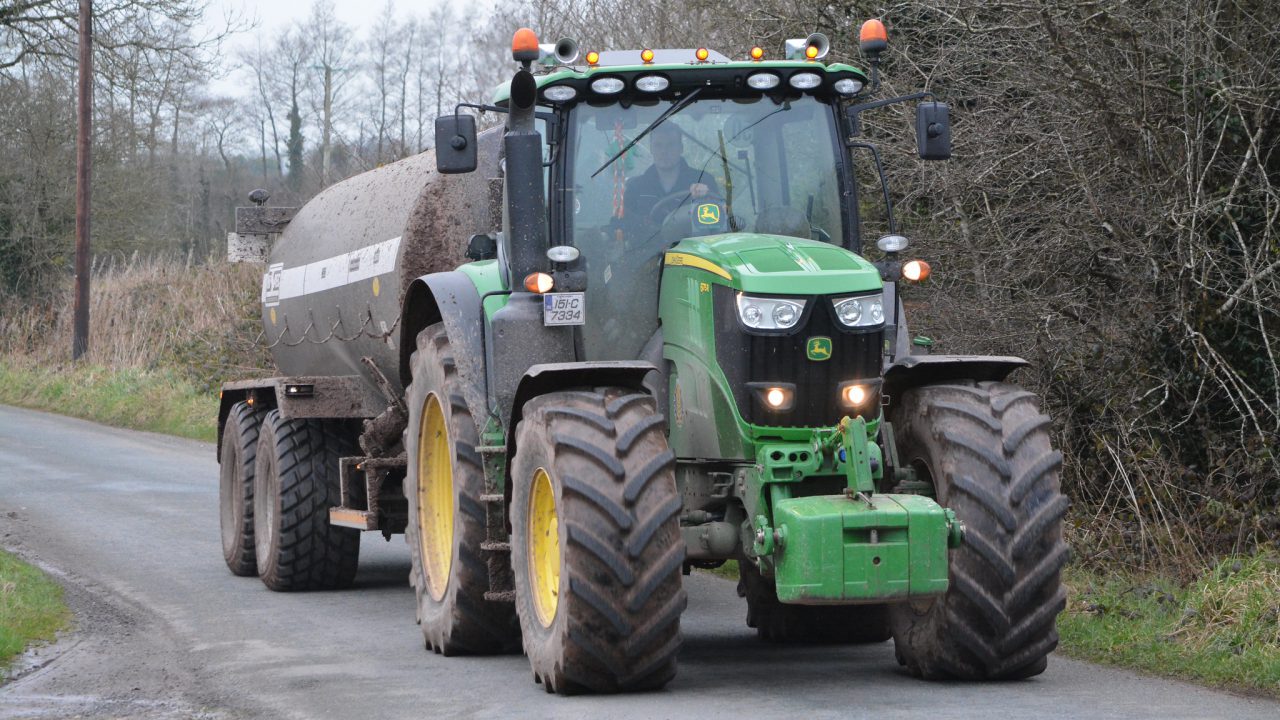Motorists are being urged not to take unnecessary risks passing out farm machinery as the slurry season gets underway across the country from tomorrow, Saturday, February 1.
The third and final spreading zone, Zone C, opens for counties across the north and west of the country as the slurry ban expires tonight.
Spring marks one of the busiest of the year for farmers as they head to the fields with tractors and machinery, according to Mayo County Council’s road safety office.
It is especially important at this time of year, when farmers are moving machinery from field to field, often on public roadways.
It may be frustrating to have to slow down for these slow moving vehicles but the road safety office of Mayo County Council warns if you don’t take the time to be patient, the results can be fatal.
An increase in agricultural machinery on rural roads “has been known to aggravate some impatient drivers”, the office notes.
“Making good driving decisions will help get you both safely to your destination.”
He warned: “Country roads are unpredictable and, therefore, present far more challenges to drivers.
“Country crashes often result in greater numbers of fatalities and injuries because vehicles are usually travelling at higher speeds.”
- Begin to reduce your speed immediately after seeing a slow moving vehicle emblem;
- Farm machinery operators may not be able to see drivers behind because the large equipment or load can block part of their rearview mirror. If you can’t see the driver, the driver can’t see you;
- Be extra cautious on wet roads or when there’s mud. On wet roads, stopping distance can be increased as much as five times;
- Yield to wide approaching vehicles. Farm equipment is often wider than a normal traffic lane;
- It is illegal and very dangerous to pass farm equipment in a no passing area. The relatively slow speed of farm equipment does not make it safe to pass in situations that are not otherwise lawful;
- When passing be extra cautious. Tractors and other equipment may be wider than they look from behind. Machinery that is half on the road and half on the shoulder may suddenly move completely on the road to avoid hitting obstacles such as mailboxes, road signs and bridges;
- Be sure there is adequate distance for you to clear the equipment and pass safely;
- Check to be sure the machinery is not turning left. Because of the size of today’s equipment, farmers often have to make wide left turns. Don’t assume that when the equipment veers left, the operator is pulling over for you to pass. The operator is likely preparing to make a wide right turn;
- Be patient. Farm machinery can’t travel at high speeds. Farmers are advised to move to the side of the road to let traffic pass when they are able to do so safely;
- The keys to sharing the road with farm equipment are caution and patience.
Gibbons also asked farmers to be mindful of busy morning and afternoon commuters.
He said: “While it often is impossible to avoid operating on the roads during these times, it may be possible to limit road transportation and, if there is a build-up of traffic behind farm vehicles, pull in and let traffic pass where it is safe to do so.”
